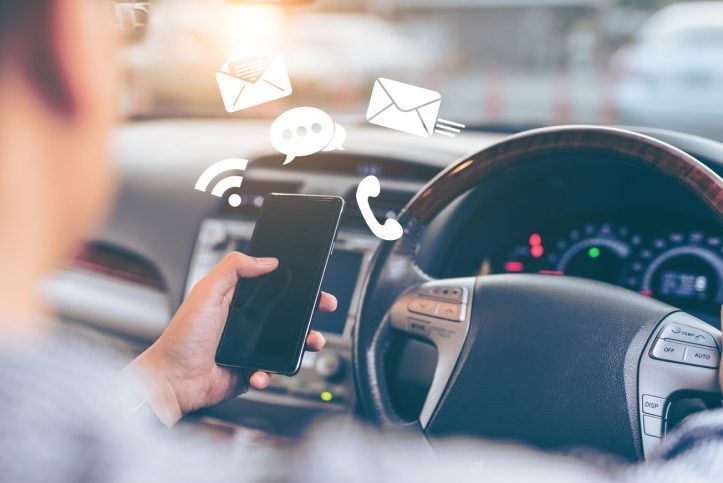
Distracted Driving: Don’t Take the Risk
August 19, 2025
Did you know that if you’re driving and talking on your mobile device, you are over four times more likely to be involved in an accident? Let’s look at what constitutes distracted driving, what the consequences are and what you can do to curb any bad habits you’ve developed.
What is distracted driving?
Distracted driving is defined as any activity that diverts attention from driving, and can include talking or texting on your phone, eating and drinking, talking to people in your vehicle, fiddling with the stereo, entertainment or navigation system, depending on the province you’re in. Here are some specific examples:
- Texting or dialing your phone or hand-held wireless device
- Using your tablet or portable gaming system
- Engaging with a display screen unrelated to driving (e.g., watching a video)
- Programming a GPS (if not via voice command)
- Eating, drinking, smoking, grooming, reaching for things or reading while driving
Even in places where it’s legal to use a hands-free device while driving, the risk of being involved in an accident is still greatly increased. Talking on any device can diminish your reaction time, making you a risk to both yourself and others.
It can be deadly
Distracted driving fatalities have surpassed impaired driving fatalities in several provinces, according to the Traffic Injury Research Foundation. In a poll by the Canadian Automobile Association, 79% of drivers admitted to being distracted while driving. The top distractions cited were phones and in-vehicle technologies.
How to prevent distracted driving
We’ve become accustomed to responding to our phones as soon as they chime, beep or vibrate. That’s why it’s so tempting to answer calls and press buttons while driving. Here are some tips on what you can do to avoid becoming distracted while driving:
Turn your mobile device off: This is the easiest and the hardest solution. Powering down your device ensures that you’ll be distraction-free, but doing this requires some discipline. Try turning your phone off when you enter your car, then turning it back on when you get out.
Hide your device: Even if you have your phone off and it’s beside you, you might be tempted to power it up while driving to see if you’ve missed a call or message. If you can’t see your phone, chances are you’ll be less tempted to respond to it. Try putting your device in the trunk of the car before getting in. You probably won’t even miss it.
Set your phone to “Do Not Disturb”: Most phones have this feature. It will prevent calls and texts from coming in unless the caller is on a designated list or the same number calls multiple times in a row. Setting your device to “Do Not Disturb” with your Bluetooth activated ensures only important calls come through.
Give your phone to a passenger: If you’re expecting an important call or text, give your phone to someone else who can respond. They can take care of the call while you take care of the driving.
Distracted driving is a serious risk to you and others. It’s not worth taking the chance. If you have questions about how changing your driving habits can affect your insurance rate, speak to your insurance broker.



